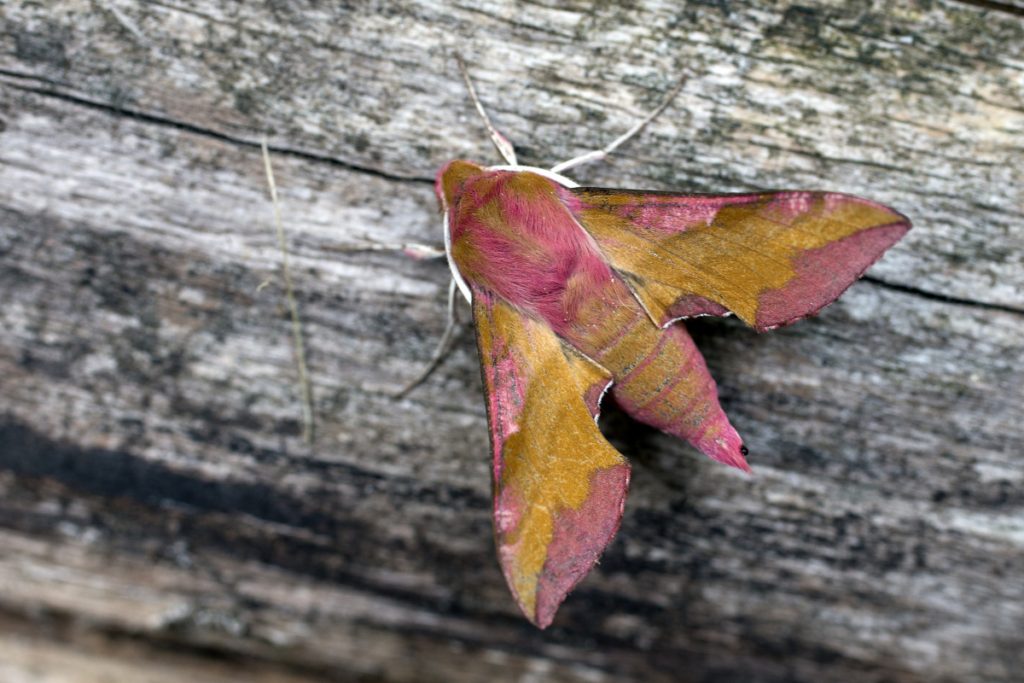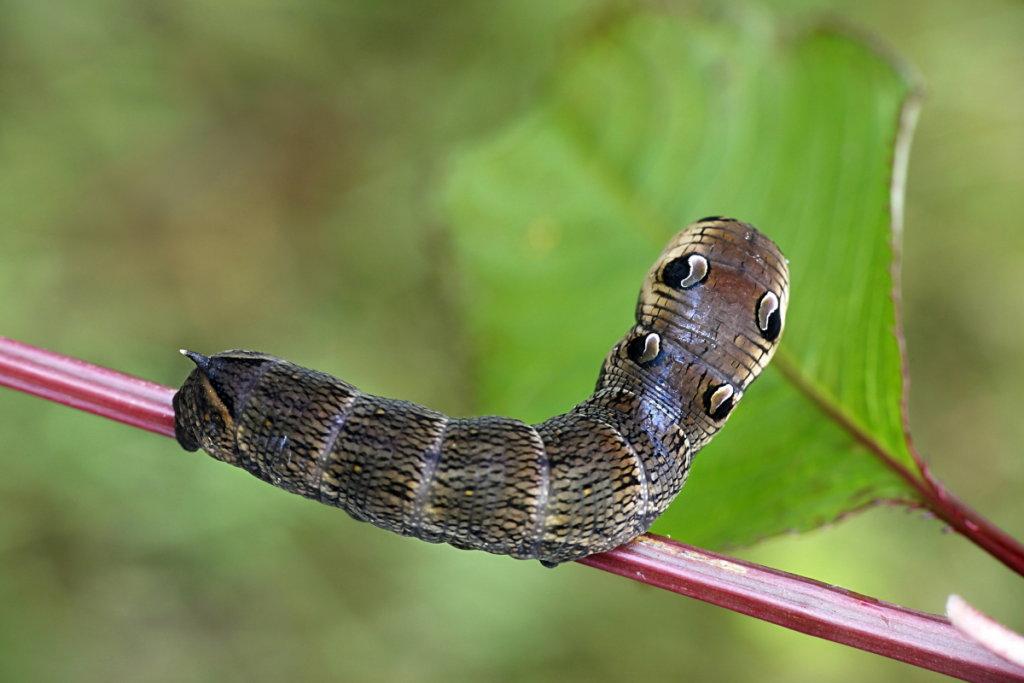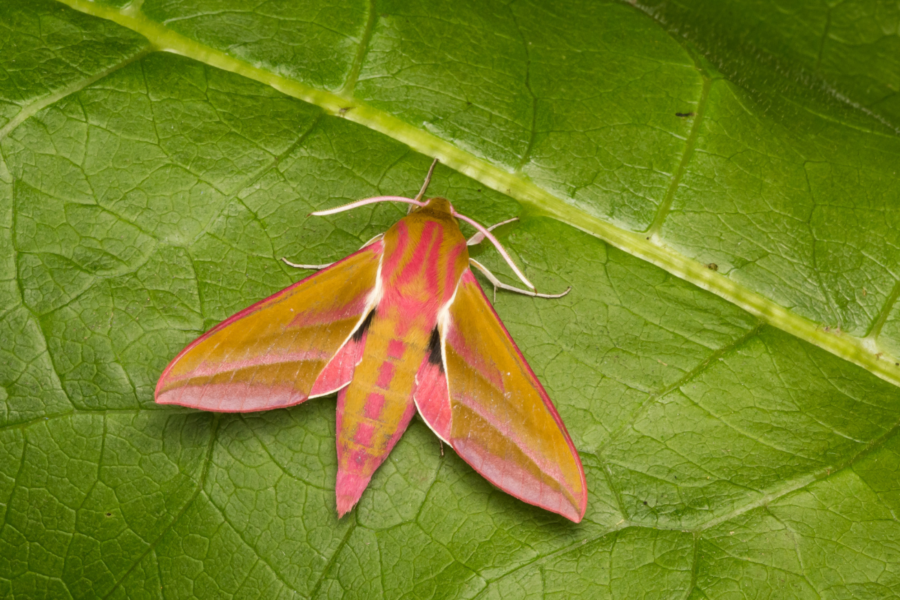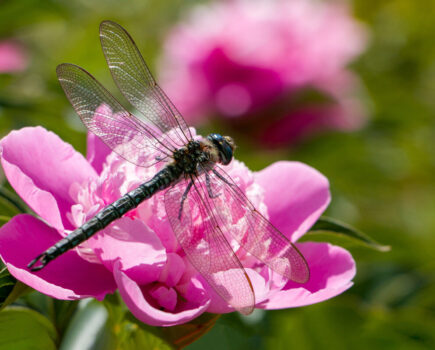Olivia Watts from the Field Studies Council explains some of these magnificent moths you can see in May
Hawkmoths are a group of insects that are commonly encountered in gardens across the UK. They have acquired their name from their impressive size and their ability to manoeuvre well in flight. The adults have spectacular colours and the caterpillars have evolved impressive tactics to deter predators. With the warmer weather, May is a great time of year to see many of these moths in flight, including the lime hawk-moth, poplar hawk-moth and elephant hawk-moth.
Elephant hawk-moth
The elephant hawk-moth (Deilephila elpenor) is a medium-sized moth, adorned with pink and olive-green tones. Keep an eye out at dusk on milder nights between May and early August for a chance to spot this beautiful pink moth as it flits through the sky in search of nectar from tubular flowers like honeysuckle and fuchsia.
It is found throughout the UK in various habitats including gardens, parks, woodlands, and meadows, and is easily recognisable by its size as it has a wingspan up to 6cm (2.5in) wingspan and vibrant colours.
While alike in appearance, it’s worth taking note of a similar species, the small elephant hawk-moth (Deilephila porcellus). Although the two may look very similar, they are in fact different species. The small elephant hawk-moth has different patterns on its wings and, you probably guessed it, it’s smaller than the regular elephant Hawkmoth.
If in doubt about identification, snapping a photo from above and comparing it to reference images and wildlife guides can provide clarity.

Caterpillar
Like all moths, hawkmoths have a four-stage life cycle, starting as an egg, hatching into a caterpillar (where they spend lots of time eating and growing), before pupating and emerging as an adult moth.
If you haven’t seen the adult elephant hawk-moth before, you may have encountered it in an earlier life stage. Typically, sightings of the distinctive caterpillars peak in August and early September, when they’ve reached a substantial size of approximately 8cm (4in) in length. They can vary in colour from light to dark brown and have a trunk-like appearance, hence their name. You may also find bright green forms of this caterpillar, but they are less common.
Caterpillars, being vulnerable, rely on camouflage and mimicry as defence mechanisms. The elephant hawk-moth showcases particularly striking mimicry markings, with the ‘eyespots’ near its head. When threatened, these caterpillars elevate their heads to display these markings, deterring potential predators from making a meal out of them.

Frequently Asked Questions
Q. How many hawk-moth species are there in the UK?
A. In the UK we have nine resident species and nine summer migrants. Resident species are those that complete their full life cycle in the UK, whereas summer migrants undergo part of their lifecycle elsewhere.
Q. What do elephant hawk-moth caterpillars feed on?
A. Typically they feed on rosebay willowherb (and other willowherbs), fuchsias, bedstraws and enchanter’s nightshade.
Q. What benefits do they provide to gardeners?
A. Moths are often misunderstood, but they are extremely valuable to gardeners. Under the cover of darkness, moths are busy pollinating your plants. Recent research suggests that moths may be more efficient at pollination than bees – so encouraging both day-flying and night-flying pollinators is great for your garden.
Interested to learn more about moths?
You can find out more about these fascinating insects with guides and courses provided by the Field Studies Council: www.field-studies-council.org
Find more tips, advice and articles like this at the Amateur Gardening website. Subscribe to Amateur Gardening magazine now.





